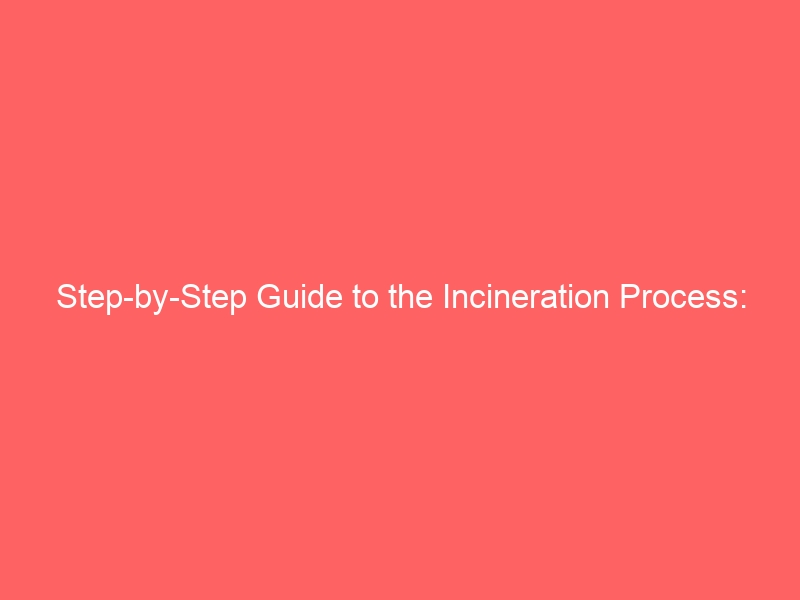Incineration is a waste treatment process that involves the combustion of organic substances contained in waste materials. The process of incineration is gaining popularity as a method of waste disposal due to its ability to reduce the volume of waste and generate energy in the form of heat and electricity. In this article, we will take a closer look at the incineration process and provide a step-by-step guide along with a flow diagram to help you understand the process better.
Step 1: Waste Reception
The first step in the incineration process involves the collection and reception of waste materials. These wastes may include municipal solid waste, hazardous waste, medical waste, and industrial waste. Before the waste is incinerated, it is important to ensure that it is properly sorted and segregated to remove any non-combustible materials or hazardous substances.
Step 2: Waste Handling
Once the waste is received, it is then transported to the incineration facility where it will undergo various handling processes such as shredding, crushing, and sorting. This step is crucial in preparing the waste for the incineration process and ensuring that it is in a suitable form for combustion.
Step 3: Waste Storage
After the waste has been prepared for incineration, it is stored in a designated area within the facility. This storage area should be equipped with proper ventilation and safety measures to prevent the release of any harmful fumes or gases.
Step 4: Waste Feeding
The next step in the incineration process involves feeding the waste into the combustion chamber of the incinerator. This is typically done using a conveyor system or an automated feeding mechanism to ensure a continuous and controlled supply of waste materials.
Step 5: Combustion
Once the waste has been fed into the combustion chamber, it is then subjected to high temperatures ranging from 800 to 1000 degrees Celsius. This extreme heat causes the organic materials in the waste to undergo combustion, generating heat and releasing gases such as carbon dioxide and water vapor.
Step 6: Energy Recovery
As the waste undergoes combustion, the heat generated is used to produce steam, which in turn drives a turbine to generate electricity. This is a key advantage of the incineration process, as it allows for the recovery and utilization of energy from the waste materials.
Step 7: Gas Treatment
During the combustion process, the release of gases and other by-products must be carefully managed to minimize environmental impact. This is achieved through the use of air pollution control devices such as scrubbers, bag filters, and electrostatic precipitators, which help to remove pollutants and control emissions.
Step 8: Ash Handling
After the combustion process is complete, the remaining ash and residues are collected and treated. The ash may undergo further processing to remove any hazardous components before being disposed of in a landfill or used for various applications such as construction materials.
Flow Diagram Explained
To better visualize the incineration process, a flow diagram can be used to illustrate the various steps involved. The flow diagram typically includes graphical representations of key components such as waste reception, handling, storage, feeding, combustion, energy recovery, gas treatment, and ash handling. This visual representation helps to provide a clear and concise overview of the incineration process and its different stages.
In conclusion, the incineration process is a complex waste treatment method that involves several important steps and components. By following the step-by-step guide and understanding the flow diagram, it becomes easier to grasp the intricacies of the incineration process and appreciate the benefits it offers in terms of waste reduction and energy recovery.







